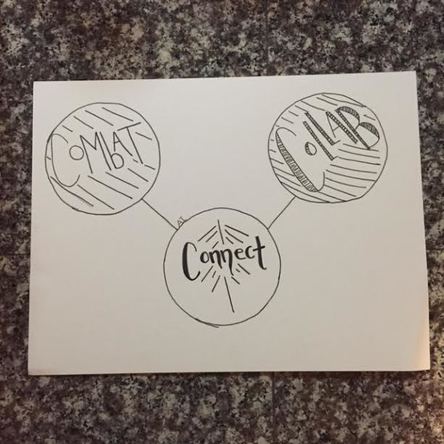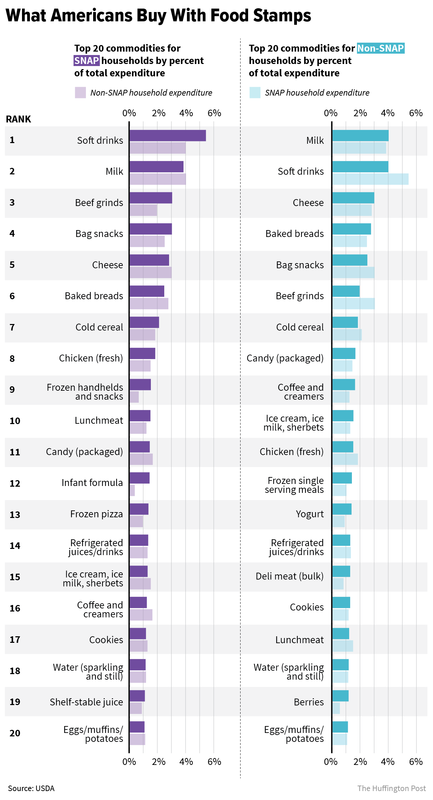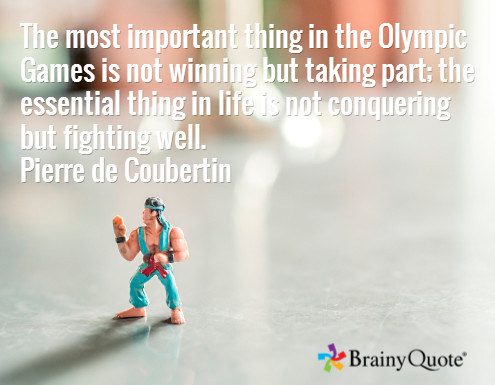 Can't we all just get along? Can't we all just get along? Originally published as Shared Spaces: Shaking Up The Restoration In-Office Experience February 24, 2016 by Restoration & Remediation Magazine (R&R) By Jon Isaacson Could restoration companies benefit from a non-traditional work space? I started my career in property restoration in a shared office with myself, my manager and space designated for our crew to meet and interact. At most places I have worked since, the more normative office is laid out in designated segments of isolation. While I don't dismiss the value of personal space and enjoy my privacy as much as anyone, I have found the value of shared spaced and have worked to create open work space in every team that I have supervised. Shared Space Equals Shared Experiences When you share an office, you can feel the pulse of the team. You hear your team, even when you are not conversing with them directly, you are hearing their interactions. While there are times when the noise level has to be managed, when you hire people who are respectful they will likely already understand the dynamics of time and place in an open space. For our teams the benefits of a communal office within our department has far outweighed the perceived negatives. Imposing an open office on people who are not ready for it is a recipe for disaster. Transitioning to a shared space is made much more seamless when you have people who enjoy working together and/or you hire people who understand the culture. Implementing an open office is not of any benefit if it does not reflect your culture or add value to your team. Open Space Equals Open Communication Creating a shared space has allowed us to more readily share information at all levels of our department. Having our crew come into our office in the morning creates a natural opportunity to discuss the day's assignments. When the crew returns in the evening, we can debrief and discuss needs for the following day. These organic connection points throughout the day have increased our interactions at professional and personal levels. Combining our open space with making our workloads visible has helped us to elevate our clarity across our team interactions. Your office is your second home. Arguably, you spend more time in your work space with your work peeps than with your actual family, so making it an enjoyable and functional environment should be a priority. When drafting the plan for your work space - whether open, traditional or some other system with a fancy name - think about the following:
For our department, we have hired people who bring value to the team, we have been protective of the culture that we have developed and we have enjoyed the benefits of a shared work space.
0 Comments
 Connect. Collaborate. Combat. Connect. Collaborate. Combat. How can we connect and collaborate to combat the trajectory of our communal nutritional defects? In America we have a paradox of seemingly polar health issues where our population suffers simultaneously from obesity as well as food insecurity. According to the USDA the statistics used to note that one in six Americans suffer from hunger but in 2006 the wording was changed from hunger to a more scientifically explanatory term of food insecurity (Schulzke, 2012). While food assistance, often understood as food stamps or SNAP, is available the link between access to food is not always a clear connection towards elevating health in our communities through the distribution of these resources. Whether it confounds logic or not, those who are at highest risk for food insecurity – the poor or under privileged, can simultaneously be at high risk for obesity. What we want to explore is what are the potential causes for this dichotomy, for which we would ask readers to hold your assumptions for just a few moments, as well as what our communities may do to generate a better overall health for our neighbors as a healthy Lane County is of benefit to our social, communal and economic well-being. Making an impact in this arena of food insecurity which impacts children, generations and our society as a whole may be simpler than we think. Think connect, collaborate and combat. If you took a survey of why people think that others are obese, what would the bulk of the answers be? Poor eating choices and habits would likely top the list of most informal surveys, regardless of whether there is research that supports this public perception. What about this headline, “Soft Drinks No. 1 Purchase by Food Stamp Recipients,” where CNS News relayed a report by the Food and Nutrition Service showing that over $350 million dollars were spent on soft drinks as a grocery selection that far surpassed any other food commodity (Jeffrey, 2016). The headline is catchy and would be a confirmation bias for anyone who would want to prove that those on government assistance are perpetually making poor choices with regards to health, as though to say it was their own fault and/or they reap what they sow. Yet, in this same article the study notes that purchasing patterns were similar between households receiving Supplemental Nutritional Assistance Program (SNAP) funds and those that were not, so much so that, “The top two commodities were the same for SNAP and non-SNAP households.” The veil between those on assistance and those who are not receiving help from the government isn’t that thick, we share many of the same bad habits when it comes to our purchasing patterns, our meal planning and our utilization of healthy food resources. The first step to effective connection, collaboration and combat of this issue is to understand that we are connected whether we like it or not. Households utilizing SNAP benefits, synonymous with food stamps, on average are taking in the same amount of calories as non-SNAP households, yet many of those homes receiving assistance are eating less nutritious (even if in some cases only marginally so). Individuals and families who do not receive government assistance for food don’t score remarkably higher than those on food stamps, as according to University of Connecticut researcher and author Tatiana Andreyeva, “The average American scored 58 out of 100 – a failing grade – on the Healthy Eating Index (Godoy, 2015).” Our habits are more similar between socio-economic classes than we may want to admit. For many individuals and families, vegetables often are consumed in the form of delicious pizza toppings and the preferential preparation of starches is through deep frying. In the same study for the Healthy Eating Index the average food stamp recipient did score lower than non-SNAP individuals, but marginally so as their scores were 47-51 out of 100, a 7-9% variance between groups. If there is a common thread of low health scores between citizens who receive food assistance as well as those who do not receive these benefits, how can our communities work to elevate our overall knowledge and commitment to health? We understand that we are connected whether we like it or not, so to build upon that connection we need to recognize that everyone could benefit from understanding how to identify healthy options as well as how to prepare them in a way that is appealing. Regardless of your economic status, if you were handed a beautiful eggplant would you know what it was as well as how to prepare it? For most people if a recipe has eggplant in the title or the ingredients list it would be an automatic swipe left to reject that meal. The fear of the unknown can be powerful, especially when it comes to food. There is a gap in the general knowledge base for how to meal plan as it relates to working within the budget you have available for groceries, whether this budget is supplemented by assistance programs or not. Meal planning can save time and money as well as contribute to health while reducing waste. It is estimated that as much as 25% of the food purchased in America is thrown away (Garrett, 2014). Think of how much effort goes into a family making it to the grocery store - making some kind of list, getting the kids in the vehicle, traveling to the store, making it through the store with all members of the family intact and in the same condition they arrived in, waiting in line, getting all the items and people back into the vehicle, returning home and putting everything away – only to throw away a quarter of the products that were procured during that expedition. Wasted time, money and resource, all of which we have an ever reducing supply of. Meal planning can help you plan your calories to achieve your nutrition goals, trim needless waste and save you money/resources that could be more effectively spent for personal or family financial goals. We know we are connected, we know we need to expand our food education and as we build upon that we need to strengthen our connection with resources that assist us to function within our means. There are resources available online to assist with planning as well as people or organizations within your community that can provide assistance for resource allocation as it relates to meeting your nutrition, health and financial goals, connect.  As noted by mother of six and San Diego based food planner, Jessica Fisher of goodcheapeats.com, she suggests starting with the meals that your family usually likes, map those out on a calendar and then experiment with recipes you find to add those into your rotation (Garrett, 2014). Tools don’t have to be sophisticated but writing out a mean plan on the calendar can be the first step towards putting and efficient grocery shopping list together. Now we face our second nutritional void – knowing how to cook something tasty with that beautiful eggplant we received in the preceding paragraph. How do we prepare it, what seasonings do we use, what do we pair it with and how long do we cook it for? On the comparison lists of top 20 commodity items purchased by households that receive SNAP assistance as well as those that don’t, fresh vegetables do not make the list for either group (see Figure 1, Delaney & Scheller, 2016), again showing that this issue with lack of food knowledge thins the veil that separates the classes. Statistics like these demonstrate that we as American’s on the whole are underperforming in our planning, preparation and execution of healthy eating. A community that wants to make changes that will impact local health across barriers, sharing knowledge for meal planning as well as tips for meal preparation can make deep impacts to the benefit of all ages, groups and classes on through to the broader application in making for a healthier America. The food resources are there, the knowledge for planning, the skills for preparation and the ability to package this all together is an effort that will benefit all of us as humans for years to come – or we can continue on the trajectory we are on as a nation. We know we are connected, we know we need education, we know we need to live in our means and now we add these pieces of connection and build that into collaboration. If the SNAP program is creating programs such as the Double Up Food Bucks program which rewards those on assistance for making healthy choices with their food stamps (Godoy, 2015), how can we help teach those recipients to utilize these resources? If we have resources such as food banks, community gardens and food share programs that are energized by grass roots commitment to the idea that we can all connect and collaborate to solve those issues that we can control. Obesity and food scarcity are issues that we can solve, the resources area there. Arguably global hunger is a solvable issues as it is not a matter of resource shortage, according to Joshua Muldavin, a geography professor at Sarah Lawrence College who focuses on global food and agricultural instruction, “We have two or three times the amount of food right now that is needed to feed the number of people in the world (Koba, 2013).” If we go back to the 25% waste for items purchased and could change that through better meal planning by creating grocery lists that fit within our health goals, grocery lists that meet our budgetary realities and combining that with the expanded skills that provide us with the ability to cook food that is nutritional as well as tasty, we could make big changes at the local level. Change ripples as individuals become groups who affect communities who create a movement that affects a region and on to the nation and then beyond. Through connection we can collaborate and with both those elements in motion we can begin to combat the issues of obesity as well as food insecurity, the question is not whether we can do but whether we will do it. Reference:
Schulzke, Eric. “A food stamp paradox: Starving isn’t the issue – it’s access to nutritious foods.” Desert News. April 28, 2012, http://www.deseretnews.com/article/765572050/A-food-stamp-paradox-Starving-isnt-the-issue-2-its-access-to-nutritious-foods.html Jeffrey, Terence. “Soft drinks No. 1 purchase by food stamp recipients; $357,700,000 from 1 grocery chain.” CNS News. November 22, 2016, http://www.cnsnews.com/news/article/terence-p-jeffrey/357700000-1-grocery-chain-soft-drinks-no-1-purchase-food-stamp Godoy, Maria. “How America’s wealth gap shows up on our dinner plates.” NPR. September 15, 2015, http://www.npr.org/sections/thesalt/2015/09/18/441143723/people-on-food-stamps-eat-less-nutritious-food-than-everyone-else Delaney, Arthur & Scheller, Alissa. “Here’s what people buy with food stamps.” Huffington Post. November 21, 2016, http://www.huffingtonpost.com/entry/food-stamps-diet_us_582f4bd7e4b058ce7aaadea0 Koba, Mark. “A hungry world: Lots of food, in too few places.” CNBC. July 22, 2013, http://www.cnbc.com/id/100893540  Can you help expand food knowledge? Can you help expand food knowledge? If you need a boost of hope to recharge your belief that you can make a difference and to hear stories of inspiration of every day people making a difference, take a listen to the Upstanders podcast. A recent episode titled The Hunger Hack discussed how a young school aged girl was volunteering at a local food bank and noticed an issue which she dared to believe she could find a way to solve. The story reminded me of something that I had heard at a volunteer event in a community garden where the presenter noted that many families, even if they have access to fresh foods, don't know how to meal plan or cook with many whole ingredients. Many of our habits around food are learned from the environment we were raised in so our approach to healthy eating plans, grocery budgets, exposure to unique food options and our knowledge of how to prepare meals may be limited by our up bringing. For many who have are using or have had to utilize government assistance for essential services such as food stamps (myself included - read HERE), even if you had access to good food you may need some help understanding how to make the provisions stretch and well as how to prepare them so that they taste good. If a community garden can grow beautiful eggplants, which is a great accomplishment, how can we maximize that resource to teach individuals and families how to prepare delicious meals with the ingredients that are available? Let me know if you are interested in this as well or if you know people and resources that are already working on this area of need, please reach out through the CONTACT page. If you need some ideas, we have a few that we have created using basic ingredients and a crockpot - check our videos for Crockpot Recipes for Large Families HERE.  It’s wild how often we fail to empathize with persons we should so readily be able to identify with. In the world of coaching youth sports, we adults often forget what it’s like to be a kid. Even though, like our students, adults spend most of our day locked in a prison like facility, being barked at by our superiors while we follow directives that may make little sense. Kids come to practice wound up after being held captive for hours – aren’t we adults wound up after being mind numbingly sedentary in our work environment? We show up at practice and the kids are out of control, is it because – A) These kids just don’t comprehend the value of the skills you are imparting to them? B) These kids have terrible parents who have no discipline and therefore have low thresholds for paying attention or valuing your unpaid investment in their futures? C) The education system is failing these kids because…Obama or Bush or whomever you like to blame for our nations current conditions? D) Your practice is boring… Coaching kids is no easy assignment. But if you passed the rigorous requirements of being the only one brave enough to volunteer, you have committed yourself to doing your best with what you have to help these kids learn and enjoy the sport. For every youth sport team there are 1) the kids that want to be there, 2) the kids that have a mild interest, and 3) the kids that their parents just signed him up for something to get them out of the house. Regardless of where they are coming from it’s your job as the coach to find creative ways to engage them to commit in some level to the team. Unfortunately the same approach won’t work for all kids.  A few tips we have learned through years of experience coaching youth of all ages and skills: 1) Get as much help as you can. Draft other parents to assist with practice or even components in practice. Enlist their help and give them assignments, especially if they are vocal at games about what is going wrong. “Thank you for your passion and input, since you know so much about this sport why don’t you come and assist.” Empower your stars to assist in teaching their teammates core skills. Often kids that are the most challenging need to be challenged, give them opportunities to assist you with the team. As you solicit assistants, keep control by giving helpers specific assignments or areas of oversight. The kid has a mild interest your goal here is primarily to make it fun especially at the younger ages then they can fall in love with the sport or activity and see the value in what you are trying to do. These kids for the most part if you can show them how to win or score they will engage more fully in the process. Often you can make a challenge to get them engaged. 2) Have a plan. Reading accounts from successful coaches they all come to practice prepared to maximize the time and efforts of all involved. We like to break our practices into 10 minute segments so that practice is structured and keeps a tempo. When you have a plan as a coach you are mentally organized, you can enable people to assist you and the kids will better respond to the structure (See more on constructing a practice plan in our Dyojo Article – Yes, Practice). An important aspect of the plan is to mix the fun of tea sport with the skills of the sport. As a youth coach your goal is to make the memory of your sport a good one, to progressively teach your team core skills (they won’t get them all at once) and to be a physical outlet for kids. If the kids are having fun and learning something, you are doing your job right. 3) Remember to have fun. In most sports kids need to be fit enough to play, which usually involves running, find creative ways to get their lungs burning. For basketball and soccer, a simple running drill is to have two players on the line, throw a ball as far as you can and have them scrimmage 1 v 1 back to the starting point. Running + skills + competition = good drill. For those kids that mom and dad just dropped them off and they want nothing to do with your activity, you are fighting an uphill battle. Find a means to challenge them to engage – for example some kids respond to pointing out that another kid is better than them and you want them to see if they can beat the one who is excelling. Some kids respond to challenges related to certain benchmarks, determine if you can help them set achievable goals that will boost their confidence in the sport. At some point if the kid is just relentless and will not listen you need to engage the support of the parents and or your activities supervisor because having them in that environment isn’t fair to you as a volunteer to the other kids who are working hard. This should be a last resort, not your first option. Coaching, like many things in life, can be fun or frustrating. Much of your experience has to do with your perspective and how you approach the challenge. Start by setting aside some time to prepare yourself, get your bearings and stick to the plan. Get yourself some help and try to have fun. Remember that these kids, much like you, have been penned in for most of the day, your time at practice is an opportunity to get some of those physical and mental frustrations worked out in through a positive medium. At the end of the season if each kid had fun and made some progress in their skills, your efforts were successful. Good job coach. If you are an adult looking to burn off some steam from work or coaching, check out our article on adding competition to your fitness routine.
|
AuthorThoughts on personal and professional development. Jon Isaacson, The Intentional Restorer, is a contractor, author, and host of The DYOJO Podcast. The goal of The DYOJO is to help growth-minded restoration professionals shorten their DANG learning curve for personal and professional development. You can watch The DYOJO Podcast on YouTube on Thursdays or listen on your favorite podcast platform.
Archives
March 2023
Categories
All
<script type="text/javascript" src="//downloads.mailchimp.com/js/signup-forms/popup/unique-methods/embed.js" data-dojo-config="usePlainJson: true, isDebug: false"></script><script type="text/javascript">window.dojoRequire(["mojo/signup-forms/Loader"], function(L) { L.start({"baseUrl":"mc.us5.list-manage.com","uuid":"b9016446bd3c6a9f0bd835d4e","lid":"83282ffb9e","uniqueMethods":true}) })</script>
|
Jon Isaacson |
Connect. Collaborate. Conquer.
© COPYRIGHT 2015. ALL RIGHTS RESERVED.
|



 RSS Feed
RSS Feed